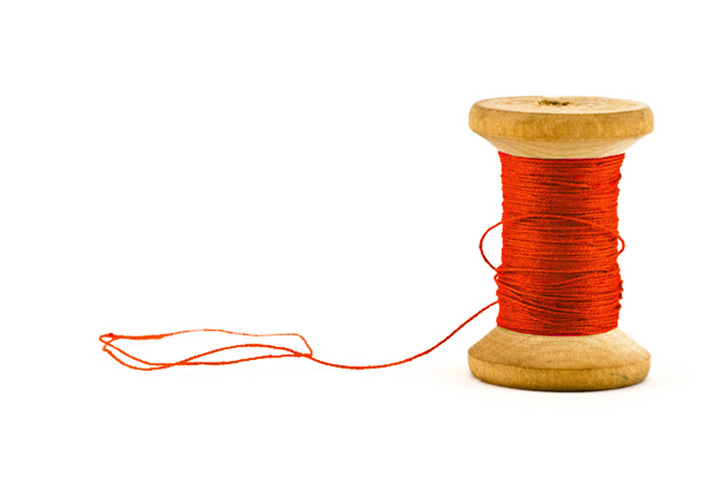
To Tie Event Strategy to Business Goals – Find the “Red Thread”
January 9, 2023
By Gordon Stake, Managing Partner, Event Marketing Partners
Historically, the basic formula for events has been content, content, and more content followed by networking and experience. Post-pandemic, however, attendee sentiment has shifted. After two years of virtual events and digital experiences, there is a pent-up demand for face-to-face interaction. We’ve witnessed this firsthand at a recent “sold out” event we helped manage with 1,500 unregistered people still showing up to attend— many from out of town.
Today, content still reigns supreme, but networking and positive experiences are becoming increasingly important. People want more time for networking and fun.
A new way of thinking about elevating experience and content delivery is to build event engagement earlier in the attendee journey. When someone signs up for a conference, why wait to engage them until they’re onsite? Why not give attendees the opportunity to engage beforehand and come to events with a built-in network of people to meet in person?
For example, prior to Summit 2022, CEMA Advisory Board members reached out to all first-time attendees who had no history with the association. The Board and I introduced ourselves and offered to help them meet people and navigate the event. We also met with many of them onsite and introduced them to other CEMA members. So right off the bat, the new attendees felt welcomed into the CEMA community and were able to begin establishing relationships.
Another new idea, which marries content, networking, and experience, is to hold small, intimate experiential activities. In 2022, Event Marketing Partners managed CEMA Summit. At the event, we had big networking receptions, but we also had shared-interest sessions like making salsa, learning about bourbon, and how to pair wine with steak. These informal, small group gatherings allowed people to interact together, bond, and form their own micro community.
Both of these ideas reflect the move away from old lead gen metrics like booth traffic and business cards collected toward a higher value, intimate relationship opportunity. Shared experiences, in which you get to know people by their first name, is highly conducive to more meaningful conversations about things you could do together. We anticipate these types of events having significant positive impact on business development, technology, partnering and other business growth drivers.
Ideas like these should play more of a role in event strategies. Getting them on the table and getting buy-in from stakeholders requires a new way of looking at how you sell the value of an event. For us, it starts with defining the underlying event message or story, which we call the event “red thread” (the central, unifying idea that runs through every aspect of an event. Connected to, but different from the event theme, it’s the unseen principle that guides and connects every aspect of every attendees’ experience).
The first step to identifying the red thread is to hold a strategic workshop with all the key stakeholders, including event, marketing and sales leads, as well as senior leadership. The workshop allows stakeholders to weigh in on the story they want to tell and the content strategy for telling that story. It also helps you find the “content sweet spot,” where your sales and marketing messages match to the content needs of your attendees. This is the red thread — where value exists for both the attendee and business sides of the event.
A good red thread workshop will result in a blueprint for the show that reflects business objectives, customer pain points, available research, and most importantly, the outcomes/requirements for each stakeholder. If you understand the company’s business goals, it’s easier to align overall event strategy to those goals.
The red thread exercise should also include discussions on planning for efficiency, cost vs. benefit analysis, event cadence, and individual and team responsibilities. Creating alignment on these fronts right from the start will enable the event team to make informed decisions, whether it be around the content structure and agenda, sponsors, or even branding details. All ideas can be evaluated through the red thread lens to determine if they align with the intent, overarching core message and goals of the event. Sometimes really good ideas don’t align with the red thread and should be tabled. It’s also wise to conduct a debrief at the end of the event to evaluate how every aspect performed against the event goals – and understand why some goals were not achieved.
The red thread approach can help make the business case to senior leadership about the value of events. It involves all stakeholders in the strategic process, gets consensus on goals and objectives, creates understanding and acceptance of the story, and outlines up front how the event strategy and execution help them achieve those objectives. The approach also helps event marketing managers think and act more like strategic marketing managers. Red thread is also a conduit for continuous testing, learning, and evolving programs to match changing company needs.
As you pursue 2023 planning and beyond – whatever stage you’re at in the process — consider taking the time to go through a red thread-style process as described above. You’ll be happy you did, and your execs will be even happier.
# # #
About Event Marketing Partners: EMP’s team of passionate, skilled event marketers delivers world class events and experiences that inspire audiences, grow brands and drive revenue. We work with companies large and small to help them achieve their business objectives through powerful events. Proud event managers of CEMA Summit 2022. Learn more at eventmarketingpartners.com.
Gordon Stake, Managing Partner, Event Marketing Partners
For more than 25 years, Gordon has led teams that help clients achieve their business goals & marketing objectives through face-to-face marketing. He is active in the industry, including sitting on the Board of Directors for the Corporate Event Marketing Association (CEMA), the Experiential Marketing Measurement Coalition (EMMC), and founding the Technology Event Marketing Strategy Council (TEMSC).



